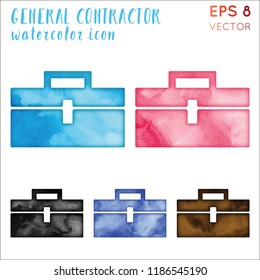Learn More About The Ways In Which Seasonal Elements Can Affect The Success Of Commercial Exterior Painting And Establish The Most Effective Times To Accomplish Long Lasting Results For Your Job
Learn More About The Ways In Which Seasonal Elements Can Affect The Success Of Commercial Exterior Painting And Establish The Most Effective Times To Accomplish Long Lasting Results For Your Job
Blog Article
Content Develop By-Burnham Decker
When you're planning a business exterior painting task, seasonal aspects can make or damage your outcomes. You'll intend to think about how temperature and humidity effect paint application and drying times. Selecting the ideal season can ensure your paint adheres properly and lasts longer. But which periods are absolutely the very best for this type of job? Let's explore the crucial elements that can impact your task's success.
The Impact of Temperature on Paint Application
When you're preparing a business external paint job, the temperature can considerably affect exactly how well the paint sticks and dries.
Ideally, you wish to paint when temperature levels vary in between 50 ° F and 85 ° F. If it's too chilly, the paint might not heal properly, causing concerns like peeling off or cracking.
On the other hand, if it's too hot, the paint can dry too quickly, preventing appropriate bond and leading to an unequal finish.
You need to also consider the moment of day; early morning or late afternoon offers cooler temperature levels, which can be a lot more favorable.
Constantly check the maker's suggestions for the specific paint you're using, as they often provide assistance on the optimal temperature level array for optimal results.
Moisture and Its Effect on Drying Times
Temperature isn't the only environmental aspect that affects your industrial external paint task; humidity plays a considerable duty as well. High moisture levels can reduce drying times drastically, influencing the total high quality of your paint job.
When the air is filled with moisture, the paint takes longer to treat, which can cause problems like inadequate bond and a greater danger of mildew growth. If you're repainting on a particularly damp day, be planned for extended delay times in between layers.
It's vital to check local weather conditions and strategy appropriately. Ideally, aim for humidity levels in between 40% and 70% for ideal drying.
Maintaining https://www.wsj.com/articles/home-painting-diy-guide-11647969759 consider mind ensures your job remains on track and supplies a long lasting finish.
Best Seasons for Commercial Outside Paint Projects
What's the best time of year for your commercial outside paint tasks?
Springtime and early loss are commonly your best options. During these periods, temperatures are mild, and moisture levels are typically reduced, creating excellent conditions for paint application and drying out.
Stay clear of summer's intense heat, which can create paint to dry as well quickly, bring about poor bond and coating. Likewise, winter months's cold temperatures can hinder correct drying and treating, risking the durability of your paint job.
Aim for days with temperatures between 50 ° F and 85 ° F for optimal outcomes. check out here in mind to examine the neighborhood weather report for rainfall, as damp problems can wreck your project.
Preparation around these aspects ensures your paint task runs smoothly and lasts longer.
Conclusion
In conclusion, preparing your business outside painting jobs around seasonal considerations can make a considerable distinction in the end result. By organizing job during the optimal temperatures and humidity degrees, you'll ensure far better adhesion and drying out times. Keep in mind to keep an eye on regional weather report and choose the correct time of year-- springtime and early loss are your best options. Taking these actions will certainly help you attain a durable and specialist surface that lasts.
